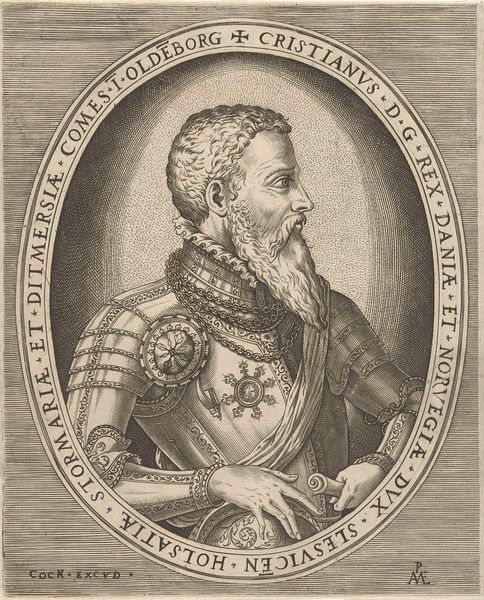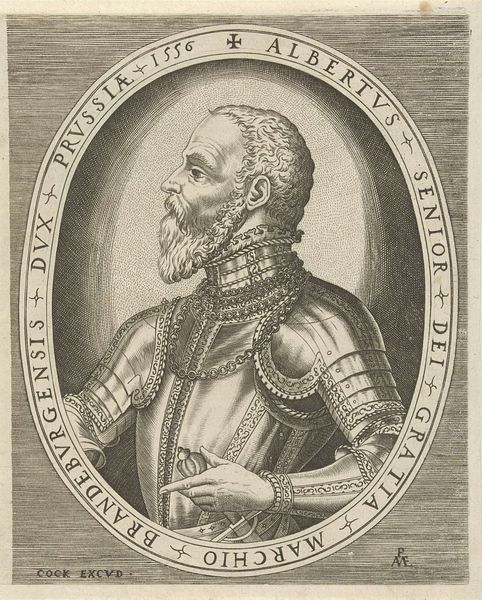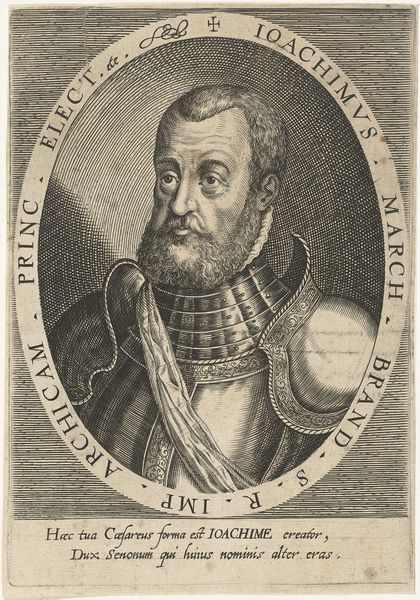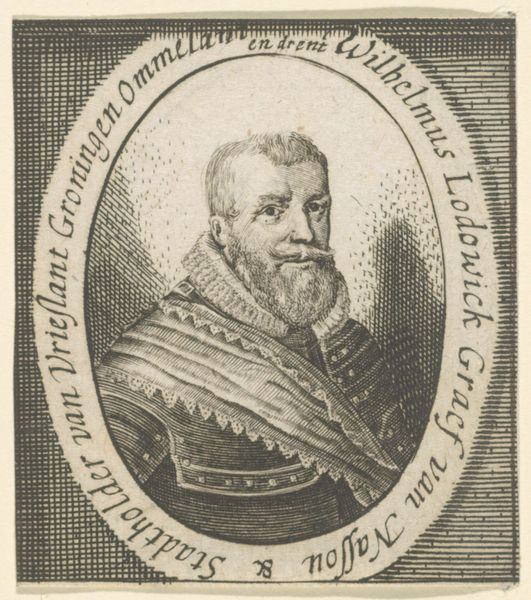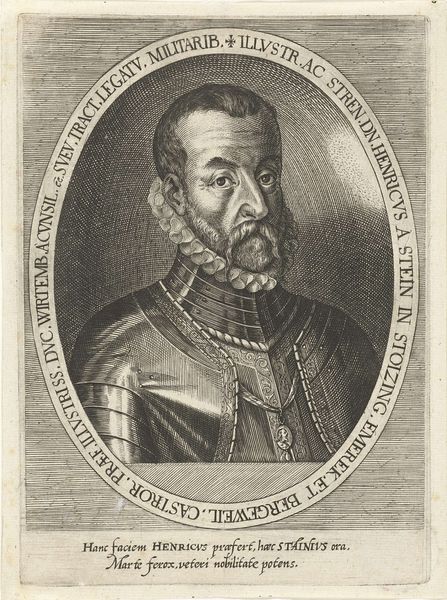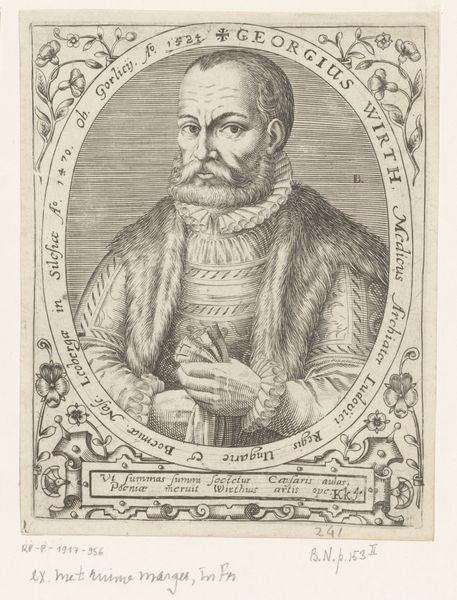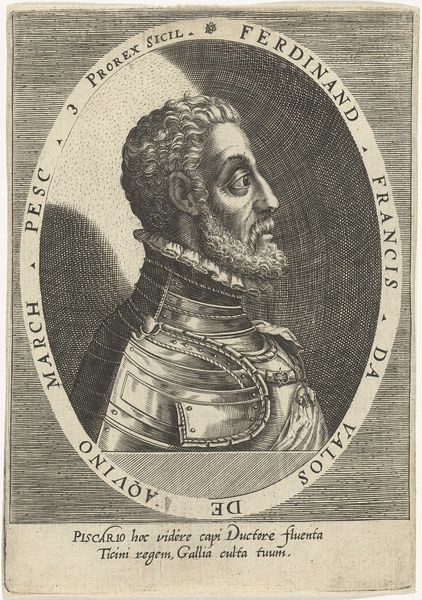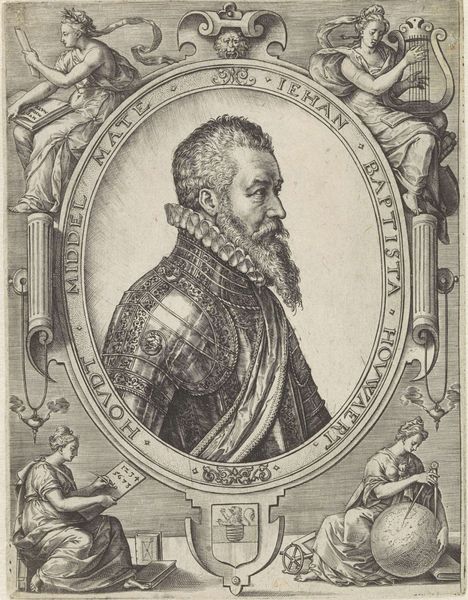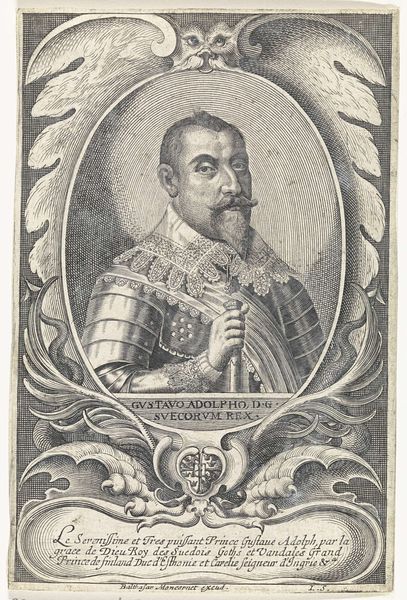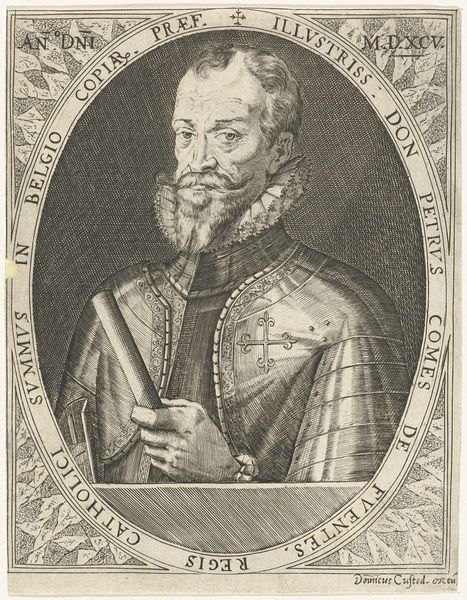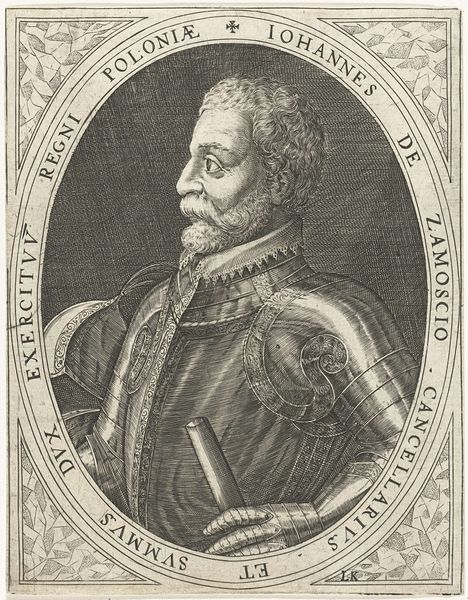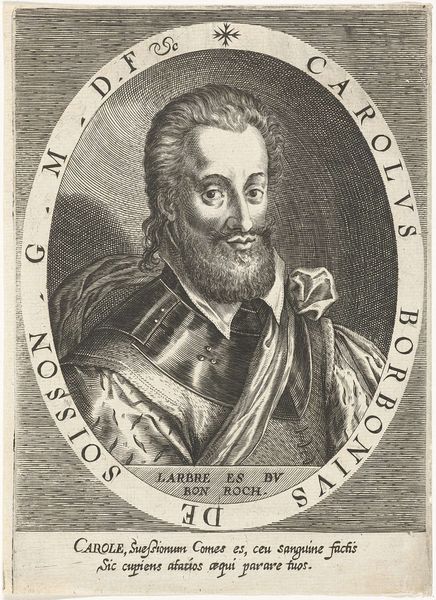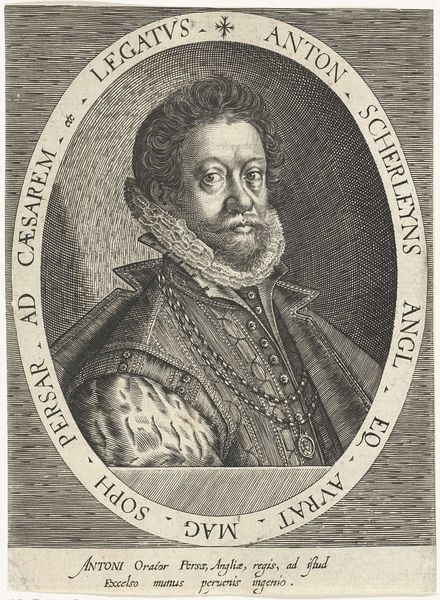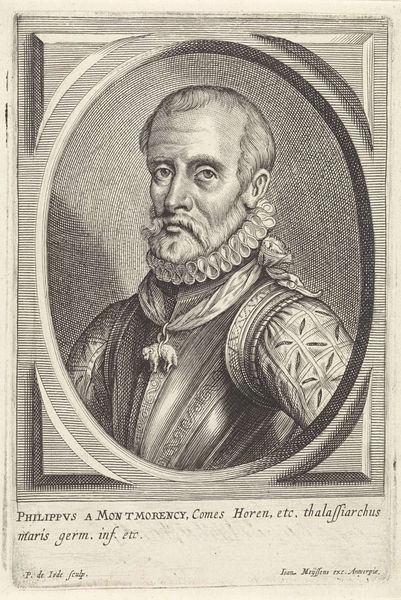
Portret van Philippe-Emmanuel de Lorraine hertog van Mercœur 1600 - 1604
0:00
0:00
dominicuscustos
Rijksmuseum
engraving
#
portrait
#
11_renaissance
#
history-painting
#
engraving
Dimensions: height 177 mm, width 125 mm
Copyright: Rijks Museum: Open Domain
Curator: Looking at this engraving, "Portret van Philippe-Emmanuel de Lorraine hertog van Mercœur" made between 1600 and 1604 by Dominicus Custos, what strikes you first? Editor: Immediately, it's the weight of it all. The visual weight. The stark black and white contrast, the density of detail... It feels like I'm staring into a storm cloud shaped like a duke. Does that make sense? Curator: Perfectly. It is quite dense, especially for an engraving. Consider, we are looking at a portrait designed for reproduction. The Rijksmuseum holds this impression, part of a series meant to broadcast Philippe-Emmanuel’s image widely. Notice how the frame isn't just decorative, it's integral, filled with text proclaiming his titles. Editor: So, less about intimate likeness, more about projecting power. And that armor—you can practically feel the cold metal, even rendered in lines. It feels... necessary. As if without it, the Duke might just dissolve. Curator: Indeed. Armor became symbolic by this period, and in some ways all of these early portraits become performative. Philippe-Emmanuel had a complex relationship with the French crown. A member of the powerful Lorraine family, he was at times in open rebellion. The portrait isn’t just showing him; it's making a statement. Editor: So, a calculated image. I wonder what his unguarded moments were like? Was he witty, cruel, thoughtful? The engraving keeps him at a remove, an icon. The engraver, Custos, really served his purpose: state-sponsored myth-making. Curator: Well said! Custos excelled at this type of precise, controlled work. And what might appear at first to be straightforward—a portrait of a nobleman—becomes, on closer inspection, a fascinating intersection of art, politics, and personality. Editor: It makes you appreciate the labor behind those power symbols. The craftsmanship transforms a man into an idea. I'll carry that storm cloud duke with me. Curator: As will I, though now seeing more calculated strategy behind those striking lines. Thank you for that reflection.
Comments
No comments
Be the first to comment and join the conversation on the ultimate creative platform.
